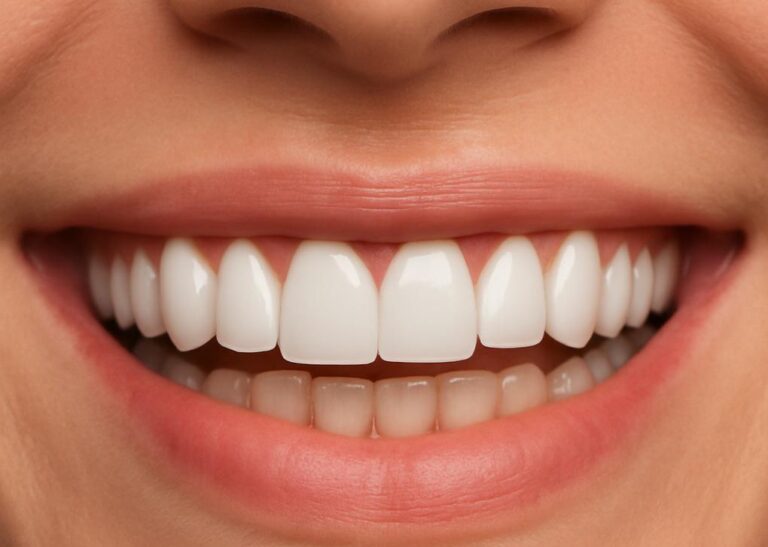Originally published on June 2nd, 2024. Updated on May 21, 2025.
Porcelain Veneers Lisp: No one Warned you About

Based on patient testimonials, cases from expert cosmetic dentists, and years of research, it is essential to discuss a concern that is often overlooked in the world of cosmetic dentistry: the impact of porcelain veneers on speech.
While porcelain veneers are popular for achieving a perfect smile, they can, unfortunately, lead to lisps and other speech issues.
This article aims to shed light on how these cosmetic enhancements can alter speech and why preserving natural teeth should be a priority.
Understanding Porcelain Veneers
Porcelain veneers are thin shells of medical-grade ceramic that are bonded to the front surface of the teeth, wrapping under and behind the tooth by up to 20-30%.

They are custom-made to match the patient’s natural teeth and are often used to correct issues such as discoloration, gaps, and misalignment.
While they offer an aesthetically pleasing solution, the process of applying veneers involves altering the natural structure of the teeth, which can have unintended consequences.
The Anatomy of Speech and the Role of Teeth
Speech is a complex process that involves the coordinated effort of various parts of the mouth, including the teeth, tongue, lips, and palate.
The teeth play a crucial role in the production of certain sounds, particularly those known as sibilants (such as “s” and “z”) and labiodental sounds (such as “f” and “v”).
Any alteration to the natural position or shape of the teeth can disrupt this delicate balance and lead to speech issues.
How Porcelain Veneers Affect Speech
- Thickness and Placement: Porcelain veneers add a layer of material to the front surface of the teeth, as well as underneath and behind the tooth. Even though this layer is thin, it can alter the way the tongue interacts with the teeth, especially during the production of sibilant sounds. The added thickness can cause the tongue to misplace or adjust its position, leading to a lisp.
- Wrapping Under and Behind the Tooth: One of the critical aspects of veneers is that they wrap under and behind the tooth. This alteration can change the natural contour of the teeth, affecting how the tongue and teeth interact during speech. The tongue may have to navigate a slightly different path, which can result in speech distortions.
- Changes in Tooth Length and Shape: Veneers often involve reshaping the natural teeth to ensure a proper fit. This reshaping can change the length and shape of the teeth, further complicating the natural speech patterns. Even minor changes can have a significant impact on the articulation of sounds.
The Psychological Impact
Apart from the physical aspects, there is also a psychological component to consider
. Patients who develop speech issues after getting veneers may experience a decline in self-confidence. They may become self-conscious about speaking, which can affect their social interactions and overall quality of life.
Celebrities and Speech Changes
Several celebrities who were known for their clear speech have developed lisps or speech issues after undergoing dental procedures, likely including porcelain veneers. Notable examples include:
- Rob Gronkowski: The renowned football player, known for his articulate speech, developed a noticeable lisp after undergoing dental enhancements.

- Carl Radke: A star of “Summer House,” Carl Radke also experienced speech changes post-dental procedures, leading to noticeable differences in his speech patterns.

- Alex Rodriguez: The former baseball player, Alex Rodriguez, has been observed to have speech issues, potentially linked to dental work that includes veneers.

Non-Invasive Alternatives
Advocating for alternatives that preserve the natural structure of the teeth, here are a few options:
- Orthodontic Treatments: Procedures such as braces or clear aligners can correct misalignment and gaps without altering the natural teeth. These treatments address the root cause of the issue rather than masking it.
- Teeth Whitening: For discoloration, professional teeth whitening treatments can be an effective solution. This approach enhances the appearance of the teeth without altering their structure.
- Composite Bonding: This less invasive procedure involves applying a tooth-colored resin to correct minor cosmetic issues. It requires minimal removal of tooth structure and can be a suitable alternative to veneers. Some dentists today are able to create enhanced composite resin veneers without any drilling of the natural tooth

Conclusion
While porcelain veneers can create a stunning smile, they come with the risk of causing lisps and other speech issues due to their impact on the natural structure of the teeth.
Based on patient testimonials and years of research, it is evident that non-invasive alternatives should be considered to maintain the integrity of the natural smile.
By doing so, we can achieve both aesthetic and functional harmony, ensuring that individuals not only look good but also feel confident in their ability to speak clearly and naturally.
Disclaimer: This content is for informational purposes only and does not constitute medical or dental advice. Always consult with a licensed dental professional before making decisions about your oral health.





